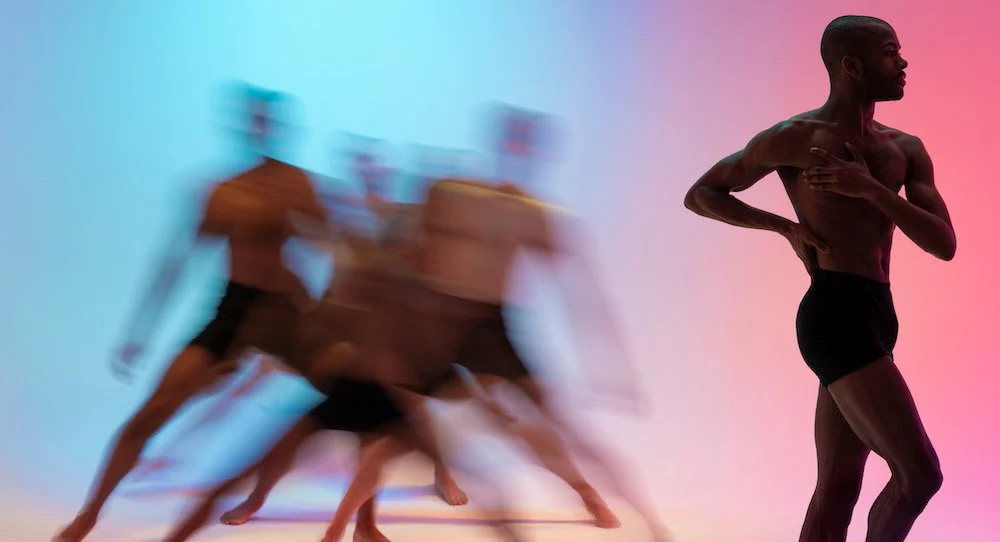Pony Box Dance Theatre: Navigating a bicoastal organization
When Artistic/Executive Director Jamie Carabetta asked her six-year-old daughter about her drawing of a horse in a circle resembling a hieroglyph, Tatiana explained that it was a pony box: “You put everything in it, even your dreams.” Pony Box Dance Theatre (PBDT), a bicoastal nonprofit arts organization whose mission is to share the joy and healing power of dance with everyone, is just such a dream space. Composed of a all-male identifying contemporary dance company and a robust community outreach program, how does PBDT manage its bicoastal existence? Dance Informa had the opportunity to ask the director herself.
Why be bicoastal? What are the benefits and drawbacks of such a structure?
“The motivation to branch out from Los Angeles actually came from one of my students who got a scholarship to The Ailey School. He said to me, ‘Why aren’t you in New York? Your work would work better here.’ So I decided to give it a shot.
The main benefit is that each place has its own structure, and when you’re in two places, you can take advantage of both. In NY, the training institutions are stellar and dancers are committed to growing artistically, whereas in L.A., the focus is commercial dance so concert dance often takes a back seat. Obviously, if a dancer has an opportunity to make $500 in one day, the dancer is going to take it. That makes sense –– they have to, and concert dance can’t compete with those kinds of commercial rates. One perk of L.A. is that there’s much more space and substantial funding for dance education. We’re able to tap into the idiosyncrasies of each location, which gives us a broader vision of dance, a wider reach and hopefully maximizes our positive impact.
The biggest disadvantages are cost and complexity. We can’t split ourselves in two, and everyone has to be paid. How do we communicate enough? How can we ensure that all our programming is operating at the same level? Pre-COVID, we were just starting in New York, and at that time we hardly used tech at all, but technologies like Zoom and Slack have become essential to the health of our organization.”
How does PBDT build and engage two audiences?
“Each city’s audiences want something different, and that’s one factor we consider. We’re a repertory company so we have choices and can build the program around an audience. We also consider the programming we already offer and try to connect the dots, a process we’re still learning to navigate. And we rely on our board. What connections do board members have? Right now, it makes more sense to have two relatively separate board entities, one in L.A. and one in NY.”
How did the three tenets of the company –– Company, Best Foot Forward and Dance For Life –– arise, and how do they interact with one another?
“Balanchine believed that both components –– company and school –– were equally important and couldn’t properly exist without one another. With the company, we’re pushing the boundaries of what male identifying artists can show and do. Lifting and leaping is great, but I’ve always wanted to see more. To see the whole person. Dance still has a long way to go in terms of gender equality and equity, and I try to do my part through the way I run the company.
Just as essential to me is sharing the joy and healing power of dance with people who don’t have access to it. I grew up in an abusive household, and dance was an escape. I want to share that escape with others. Best Foot Forward primarily works with youth, but we are working to branch out and also work with seniors. Teaching at Central Juvenile Hall in L.A. through Dance For Life was my most profound teaching experience ever. It felt like when I walked in, everything changed for those students. I’m still in touch with some of them, trying to support them as they move forward in their life. In my brain, all of these pieces of PBDT are connected and feed each other.”
What lessons can you share with other organizations who aspire to have multiple home bases?
“It’s important to find people you trust. We have a really competent staff, and that’s critical because we’re human beings and we can only be in one place at one time. It took awhile to find people who really fit and share our vision, so be patient in your search. Nothing is automatic or happens overnight, and we are still working to ensure our bicoastal sustainability. As a 501c3 nonprofit, for example, we have to file in both New York and California, because they have different systems. Figuring out the ins and outs of your organizations is a challenge that will pay off in the long run.”
For more information on Pony Box Dance Theatre, visit www.ponyboxdance.org.
